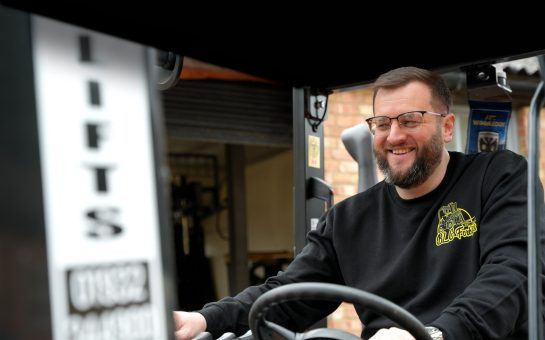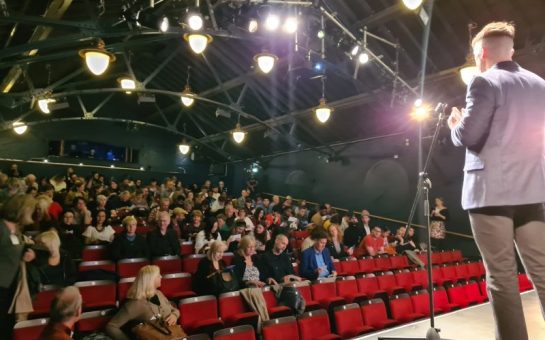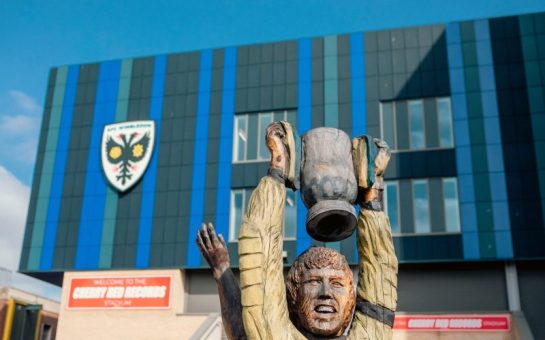Some of the world’s biggest bands played in Wimbledon during the 60s. David Jamieson takes a look…

By David Jamieson
Agassi, Federer, Sampras… Henman.
The biggest names in the world have been coming to Wimbledon since the early 20th Century.
But through the 1950s and 60s it wasn’t just summer on Centre Court that played host to global superstars.
At its height, Wimbledon’s lost music venue, the Wimbledon Palais, on the corner of Merton High Street and Mill Road, was at the centre of a music revolution in London.
Some of the stars it hosted are now more well-known than others. The Beatles, The Rolling Stones, The Who, Pink Floyd, The Kinks, Otis Redding and Little Richard.
And some – such as The Oscar Rabin Band and Ken Mackintosh – were still huge crowd-draws in their day.
The Wimbledon Palais, or Palais de Danse as it was known then, opened as a ballroom in 1922. However, it was in 1951 that the venue took a change of direction toward rock and pop culture.
Under the ownership and management of Bernard Rabin, Oscar’s son, and silent partner Geoff Watlin, former chairman of Norwich City Football Club, the Palais carved out a niche for itself in London’s youth culture.
Judy Brickell has fond memories of the Palais, where she attended gigs as a teenager in the 60s.
“It was a lovely hall,” she said. “The Palais was a good venue because it was a small and contained little place. It was like you were really part of it.”
Popular with the Mods and independent from the largest music hall chain at the time Mecca, which stubbornly refused to play pop music in its venues – even through the 60s, the Palais management’s pioneering attitude ensured it held on to its niche.
Mike Rabin, owner Bernard Rabin’s son and member of the Palais’ resident band, recalls how his father capitalised early on the trend away from large bands with traditional instruments, towards small rock groups.
But the gig that changed everything was The Beatles. The Fab Four played an afternoon and evening gig at the Palais in December 1963 when they were at the height of their fame.
To get the band, Bernard Rabin called in a favour from The Beatles’ agent Dick James, whose smaller bands he had booked at the Palais when times weren’t so good for James.
Mike said: “My father took a chance by phoning Dick James to ask if there was any chance of him securing the Beatles for a gig at the Palais. Bearing in mind that they were huge by this time, and sought after by everyone.
“He didn’t hold out too much hope, but as Dick said at the time, one good turn deserves another.”
Mike added: “That night put the Wimbledon Palais on the map as the main and largest venue for Pop music in London at that time.
“Mecca, meanwhile still refused to allow pop music in their ballrooms, which only increased the Palais’ popularity even more.”
Michael Mohan, then 13, was at the afternoon gig for Beatles’ Fan Club members, with 3,000 other hysterical fans.
He said: “My main memory of the concert was how chaotic it all was. There was a lot of noise, so you couldn’t hear much, but it felt very special.”
According to Mike Rabin, after that every big name group’s agents were queuing up to book their bands at the Palais.
The Rolling Stones played the Palais in 1964, Pink Floyd 1965, The Who and The Kinks 1966. And many, many more.
As leader of the resident band, The Demons, Mike got to play alongside every big name band of the day, including visiting American stars like Little Richard, Otis Redding, Jerry Lee-Lewis, and the Crickets – the late Buddy Holly’s band.
“Strange things I recall from those days,” remembers Mike. “A young woman’s legs dangling through the ceiling of the ballroom after she had rushed up to the dressing rooms in pursuit of Mick Jagger, only to take a wrong turn!!
“’Screaming Lord Sutch leaving a knife quivering in the top of our Hammond organ – not funny at the time – The Kinks trashing my father’s office and drinks bar.
“Oh yeah, and Pete Townsend (The Who), smashing his prop-guitar against his amp, with the lower half breaking free, thumping one of our bouncers in the back!”
Decades before Simon Cowell and the X-Factor, the Palais held its own talent competitions, the Melody Maker Beat Contests.
Strikingly similar to ITV’s hit factory, different groups from all over the country would arrive at the Palais with coach loads of their fans and perform in front of a panel of judges.
The crowd had the final say and the winning group received a recording contract for one single release and Marshall music equipment.
Outside of live rock music, the Palais kept the party going with ‘record nights’.
“We simply bought all the current, weekly releases and played them every Tuesday night,” said Mike.
“It sounds almost too obvious to understand now, but at that time, nothing like this existed anywhere in the clubs or ballrooms around London.”
Everything the Palais did continued to tighten its grip on the coolest music of the day.
In ’64 offshore pirate radio stations Radio Caroline and Radio London took up Saturday night residencies at the Palais.
Among them was future radio legend and ‘King of the Jungle’ Tony Blackburn.
On August 16, 1965, The Daily Mail reported St. John’s Ambulance were overwhelmed dealing with 150 fans that had fainted at a Radio London night at the Palais the night before.
The pop bonanza continued at the Palais until 1967, when a shift in music styles, and the need for even larger venues saw business decline.
Mike’s father was suffering from ill health and decided to sell the Wimbledon Palais to a large gambling organisation, bringing to an end its history of musical entertainment.
It then became a furniture store before being torn down entirely and replaced with flats.
Posing as a customer Mike went back to visit the old building, some years after his father had sold it on.
He said: “It was a pitiful sight to see as the building still retained the original ‘Wimbledon Palais’ entrance.
“I felt a surge of emotion standing on the stage that had once supported every huge name in the music business, and that now displayed a motley collection of beds and mattresses!”




